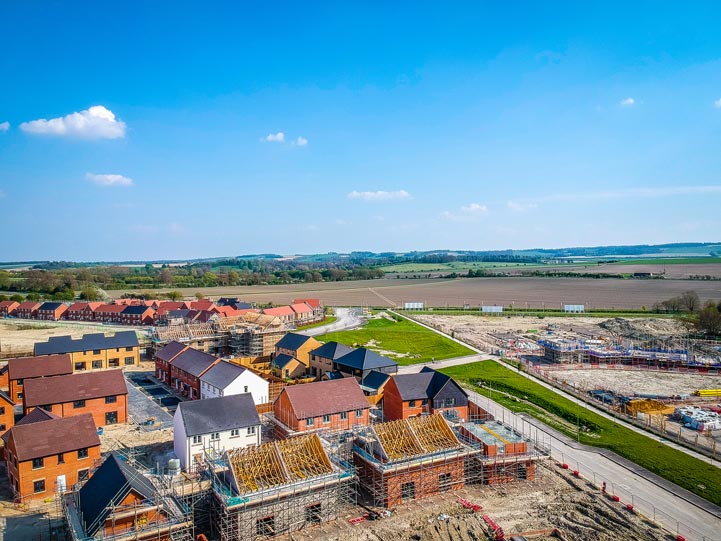What can housing associations do to ease financial pressure?
Housing associations have faced two major challenges over the last five years: the rent cut and concerns over building safety in the aftermath of the Grenfell tragedy. Both have placed pressure on the sector’s finances, even before the outbreak of Covid-19. The major costs faced by the sector over the coming years are continued work on building safety, the ramping up of decarbonisation, and increasing costs for new homes (Future Homes Standard).
The sector appears to have enough gearing capacity. But interest cover will grow more challenging as cost pressure grows. Can the sector find the cash?
Gearing should not be a problem
Back in 2016, we calculated there was £7.4bn of potential additional borrowing capacity in the sector, based on analysis of the 200 largest housing associations’ 2015 accounts. By our reckoning, this capacity lay in organisations that had both the balance sheet and cashflow capacity to support the additional debt (see Housing Association Financial Capacity). Long-term sector debt totalled £66bn in 2015.
By 2020, long-term debt held by housing associations had reached £83bn, up a quarter in five years. S&P has predicted that debt will reach £107bn by 2023, and we think it could reach £132bn by 2026.
This additional debt could fund the delivery of 190,000 additional general needs homes and 60,000 shared ownership over five years. This assumes delivery of the 2021–26 grant-funded affordable homes programme and a share of Section 106 delivery.
Gearing has remained at a similar level over the last five years, with debt staying at around 46% of the total balance sheet asset value. This is unlikely to change much over the next five years as long as housing associations take on additional debt to fund the delivery of new homes.
And there should be more gearing capacity
The gearing ratio lenders generally use is very dependent on how housing assets have been valued in the accounts. Usually this is ‘at cost’, but arguably this overstates the sector’s gearing. We have estimated the value of the sector’s assets in their existing use as social housing (EUV-SH) at £270bn, leaving debt at just 31% of asset value.
Gearing is even lower if the basis of valuation is changed to Market Value Subject to Tenancy (MV-STT). Where this valuation basis is possible, it allows for substantial uplifts compared to EUV-SH, especially in higher-value housing markets. We have estimated the MV-STT of the sector’s assets at £500bn, giving a gearing ratio of only 17%.
Despite the headline debt numbers, these estimates show how low gearing in the sector actually is.
Interest cover is the challenge
The real pressure on the sector’s finances comes in the form of interest cover. Two factors have combined to erode cash flow capacity over the last five years.
Firstly, the rent cuts. Housing associations have weathered this storm extremely well, but there is no question that they felt the impact of falling income from their core asset base. Despite substantial cost-cutting in the early years, costs per unit have gone up in line with RPI over the last five years. So, operating margin is down, and EBITDA has risen only slowly.
Housing associations have weathered this storm extremely well, but there is no question that they felt the impact of falling income from their core asset base
Lydia McLaren, Associate, Residential Research
Although the pain of the cut is over, we see little reason to expect the operating margin of the sector to improve over coming years. If costs continue to rise in line with RPI, then that increase will broadly match an increase in rents at CPI + 1%. However, the affordability of rents for tenants may prevent some organisations from raising rents at this rate.
Secondly, the increased spend on planned maintenance. We have estimated the value of the planned maintenance spend included in the sector EBITDA MRI interest cover ratio, reported by the Regulator. This has increased by 25% over the last five years.
Even if this increase is halted and the value of planned maintenance is the same in each future year as it was in 2020, the EBITDA MRI interest cover ratio would fall from 138% in 2020 to around 125% in 2026.
But organisations are unlikely to allow interest cover to fall this far. Some will be concerned by how the Regulator may view lower levels of interest cover and organisations may risk being downgraded from the prized (by many) V1 status. On top of this, allowing interest cover to fall too far will alarm credit rating agencies, as well as existing and potential future investors in the sector.
And in the future, more spending will be needed to rectify issues of building safety and to start to make substantive progress towards decarbonising social housing. The cost of new homes will also increase as the Future Homes Standard is applied.
What is certain is that failing to rise to the challenge is not an option. Rectifying building safety issues is a top priority for landlords and needs to be dealt with as soon as possible. Decarbonisation is non-negotiable and fundamental to the long-term viability of the sector’s housing assets. If development is to remain a priority, new ways of delivering additional affordable homes will be needed and should continue to be explored.

Where can the additional cash come from?
Government?
Grant will clearly continue to play a major role, particularly in the development of new affordable homes. Grant rates will need to increase to reflect increasing build costs to ensure that development remains a priority. Otherwise, there is a risk that organisations will have to focus resources on existing stock.
Cutting development plans to avoid taking on additional debt is a simple way to ease pressure on interest cover. Our calculations show that if the sector provided only an additional 110,000 general needs homes over the five years to 2025 (rather than the 190,000 we assumed above), then interest cover would remain at current levels.
Grant would also help with decarbonisation. The social housing sector has the scale and professionalism to pioneer the technologies needed to reduce the carbon impact of all UK housing, not just social housing. But Government support has been slow to emerge. Despite manifesto commitments, the £50m demonstrator fund is the only cash to have been allocated so far.
Refinancing?
Debt continues to be available at very low rates of interest and for some, the significant ongoing savings will be worth the costs of exiting existing legacy arrangements. The average rate of interest paid by the sector was 4.0% in 2020, down from 4.5% in 2016. Refinancing deals are currently being done at interest rates of around 2.5%.
Our analysis above assumes that the current average rate of 4.0% will be maintained over the next five years. If there was widespread refinancing across the sector and that interest rate could be cut to 3.0% by 2026, then EBITDA MRI would rise to 166%. Or interest cover could be maintained at current levels and an additional £2.8bn spent on planned maintenance.
There are also likely to be more specific ‘carve-outs’ from EBITDA MRI covenants for building safety investment and, to a lesser extent, for decarbonisation. We have already seen lenders take a pragmatic approach to building safety spend over the coming years, with flexible and bespoke carve-outs being agreed that allow for ‘exceptional’ spend to be excluded from covenant calculations.
Streamlining?
There is more capacity to be found through active management within the sector.
- More mergers are inevitable. They can create efficiencies of scale, provide capacity to manage financial risk, as well as match up complementary businesses with different forms of financial capacity. Mergers can also create more resilient businesses, better able to withstand future economic shocks and policy changes.
- Stock rationalisation programmes need to continue. Focusing stock ownership on core geography can drive operating efficiency. Reducing holdings in non-core tenures supports business focus.
- Sale of shared ownership portfolios. The capital invested in holding shared ownership homes returns only 2.75% per year, less than the average cost of borrowing. Sale of these portfolios would allow this capital to be reinvested in assets of greater value to the business.
New equity?
The need to maintain both new development volumes and protect cash interest cover is likely to push more organisations towards new ways to deliver additional homes, taking advantage of the large volumes of private capital seeking opportunities in affordable housing investment. Partnerships with institutional investors and new entrants could help maintain development programmes, without eroding the capacity of the business to make the necessary improvements to existing homes.
Delay?
Perhaps spending on decarbonisation should be delayed? Surplus cash could be invested in new homes, adding to the asset base and gearing capacity, as well as generating additional cashflow capacity through increased rental income. But time is limited, especially if the new Government goal to cut carbon emissions by 78% from 1990 levels by 2035 is to be realised.
Note: The numbers reported in this paper are based on Savills analysis of the annual financial statements of around 200 of the largest housing associations in England. This sample has represented the owners of between 93% and 98% of all general needs social housing in England. There are slight differences between the analysis and the numbers reported in the Regulator of Social Housing Global Accounts.
